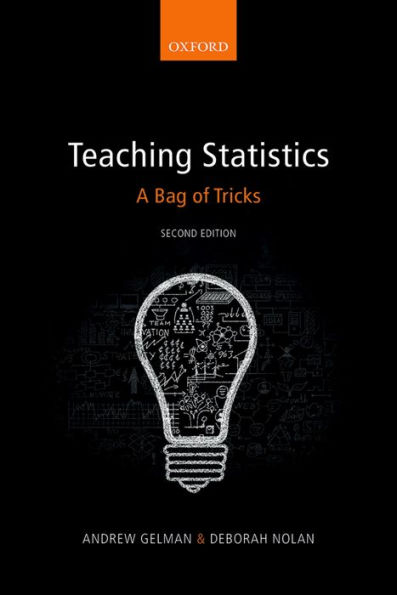Teaching Statistics: A Bag of Tricks
Students in the sciences, economics, social sciences, and medicine take an introductory statistics course. And yet statistics can be notoriously difficult for instructors to teach and for students to learn. To help overcome these challenges, Gelman and Nolan have put together this fascinating and thought-provoking book. Based on years of teaching experience the book provides a wealth of demonstrations, activities, examples, and projects that involve active student participation. Part I of the book presents a large selection of activities for introductory statistics courses and has chapters such as 'First week of class'-- with exercises to break the ice and get students talking; then descriptive statistics, graphics, linear regression, data collection (sampling and experimentation), probability, inference, and statistical communication. Part II gives tips on what works and what doesn't, how to set up effective demonstrations, how to encourage students to participate in class and to work effectively in group projects. Course plans for introductory statistics, statistics for social scientists, and communication and graphics are provided. Part III presents material for more advanced courses on topics such as decision theory, Bayesian statistics, sampling, and data science.
1122050741
Teaching Statistics: A Bag of Tricks
Students in the sciences, economics, social sciences, and medicine take an introductory statistics course. And yet statistics can be notoriously difficult for instructors to teach and for students to learn. To help overcome these challenges, Gelman and Nolan have put together this fascinating and thought-provoking book. Based on years of teaching experience the book provides a wealth of demonstrations, activities, examples, and projects that involve active student participation. Part I of the book presents a large selection of activities for introductory statistics courses and has chapters such as 'First week of class'-- with exercises to break the ice and get students talking; then descriptive statistics, graphics, linear regression, data collection (sampling and experimentation), probability, inference, and statistical communication. Part II gives tips on what works and what doesn't, how to set up effective demonstrations, how to encourage students to participate in class and to work effectively in group projects. Course plans for introductory statistics, statistics for social scientists, and communication and graphics are provided. Part III presents material for more advanced courses on topics such as decision theory, Bayesian statistics, sampling, and data science.
37.99
In Stock
5
1

Teaching Statistics: A Bag of Tricks
384
Teaching Statistics: A Bag of Tricks
384
37.99
In Stock

Product Details
| ISBN-13: | 9780191088643 |
|---|---|
| Publisher: | OUP Oxford |
| Publication date: | 08/03/2017 |
| Sold by: | Barnes & Noble |
| Format: | eBook |
| Pages: | 384 |
| File size: | 13 MB |
| Note: | This product may take a few minutes to download. |
About the Author
From the B&N Reads Blog
